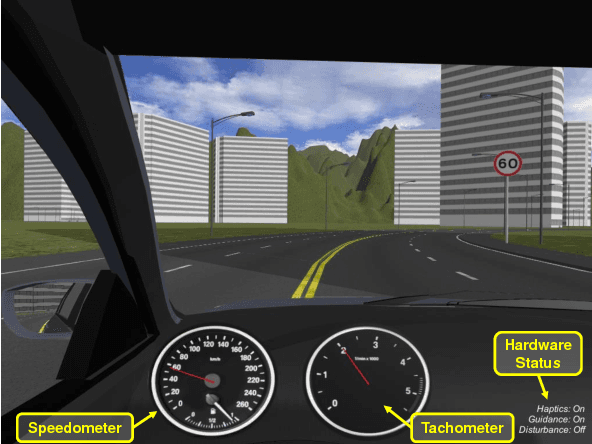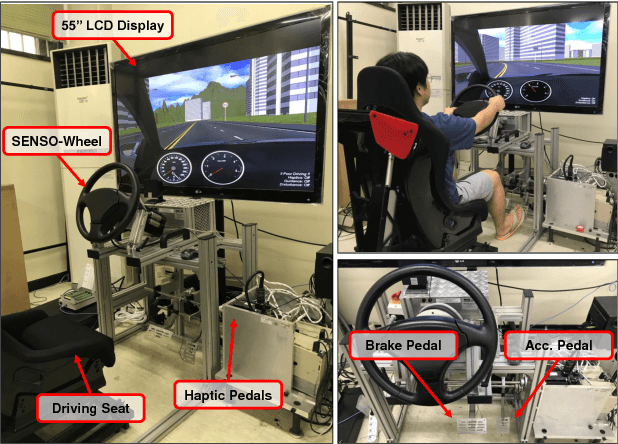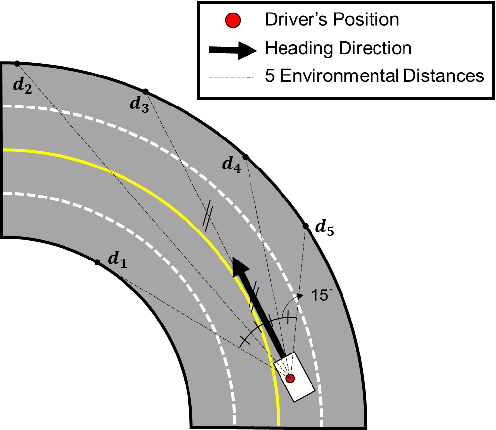Seungmoon Choi
A Review of Surface Haptics:Enabling Tactile Effects on Touch Surfaces
Apr 28, 2020



Abstract:We review the current technology underlying surface haptics that converts passive touch surfaces to active ones (machine haptics), our perception of tactile stimuli displayed through active touch surfaces (human haptics), their potential applications (human-machine interaction), and finally the challenges ahead of us in making them available through commercial systems. This review primarily covers the tactile interactions of human fingers or hands with surface-haptics displays by focusing on the three most popular actuation methods: vibrotactile, electrostatic, and ultrasonic.
Human Driving Skill Modeling Using Neural Networks for Haptic Assistance in Realistic Virtual Environments
Sep 12, 2018



Abstract:This work addresses our research on driving skill modeling using artificial neural networks for haptic assistance. In this paper, we present a haptic driving training simulator with performance-based, error-corrective haptic feedback. One key component of our simulator is the ability to learn an optimized driving skill model from the driving data of expert drivers. To this end, we obtain a model utilizing artificial neural networks to extract a desired movement of a steering wheel and an accelerator pedal based on the experts' prediction. Then, we can deliver haptic assistance based on a driver's performance error which is a difference between a current and the desired movement. We validate the performance of our framework in two respective user experiments recruiting expert/novice drivers to show the feasibility and applicability of facilitating neural networks for performance-based haptic driving skill transfer.
 Add to Chrome
Add to Chrome Add to Firefox
Add to Firefox Add to Edge
Add to Edge